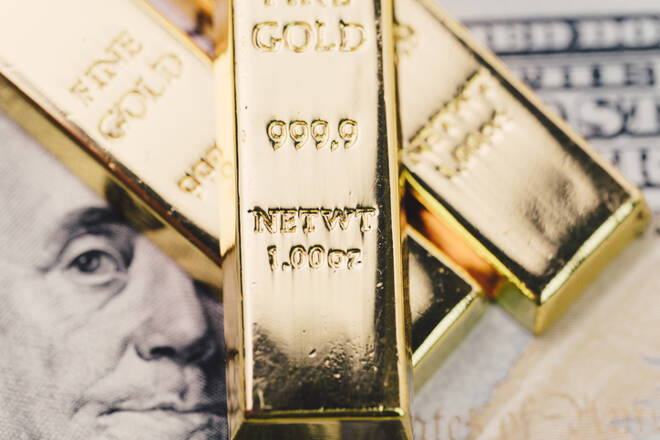Advertisement
Advertisement
Price of Gold Fundamental Daily Forecast – Dip in Yields, Lower Demand for Risk Providing Support
By:
Sharply higher crude oil prices for a prolonged period of time could weaken the global economy, which may already be on the brink of recession. This would force central banks who are in a position to do so, to lower interest rates dramatically, while driving up demand for gold.
Gold prices are trading higher on Monday as escalating tensions in the Middle East encouraged investors to seek shelter in the safe-haven U.S. Treasury notes, leading to a drop in yields, which made gold a more attractive investment. Lower demand for risky assets also sent traders into gold as a hedge against further weakness.
At 10:24 GMT, December Comex gold is trading $1512.00, up $12.60 or +0.84%.
The catalyst behind the moves in the financial markets was a weekend attack on Saudi Arabia’s major oil processing facility at Abqaiq and the nearby Khurais oil field, taking out 5.7 million barrels of daily crude production, or 50% of the kingdom’s oil output. That represents more than 5% of global oil production.
Crude oil prices spiked nearly 10% higher on the news, but came back down after the U.S. released oil from its strategic supply reserve. Additionally, speculators stepped back after Saudi Aramco reportedly said it aims to restore about a third of its output, or two million barrels, by the end of the day on Monday.
Even if production returns to normal levels over the near-term, the landscape has changed in the region with traders expected to put a risk premium on crude as long as tensions remain heightened in the region.
Effect on Gold
Sharply higher crude oil prices for a prolonged period of time could weaken the global economy, which may already be on the brink of recession. This would force central banks who are in a position to do so, to lower interest rates dramatically, while driving up demand for gold.
Even with OPEC and the International Energy Agency saying last week that oil markets could end up with a surplus in 2020, analysts at S&P Global Platts are claiming “This incident effectively eliminates the world’s spare capacity.”
Traders Waiting for Response from US
While most traders await the latest assessment of the damage from Saudi Aramco and the timetable for repairs, others are waiting for the U.S. response. U.S. Secretary of State Mike Pompeo blamed Iran for the drone strikes. And President Trump said in a tweet that the U.S. is “locked and loaded.” However, risk consultancy Eurasia Group said U.S. rhetorical support will not translate into military action as Trump searches for a foreign policy victor ahead of 2020 elections.
Daily Forecast
With military strikes from the U.S. against Iran not likely according to the experts, gold bulls are going to have to rely on some sort of prolonged delay in the repair of the Saudi production facilities to keep oil prices elevated. Higher prices could eventually weaken the global economy, which would be bullish for gold.
So the events over the next few days should determine whether gold strengthens further, or resumes its downtrend in response to rising U.S. Treasury yields and increasing demand for risk on reduced chances of a U.S. recession amid an easing of tensions between the United States and China.
About the Author
James Hyerczykauthor
James Hyerczyk is a U.S. based seasoned technical analyst and educator with over 40 years of experience in market analysis and trading, specializing in chart patterns and price movement. He is the author of two books on technical analysis and has a background in both futures and stock markets.
Did you find this article useful?
Latest news and analysis
Advertisement
